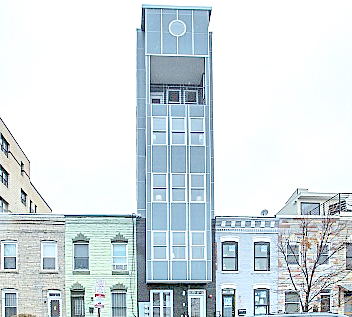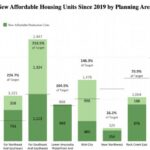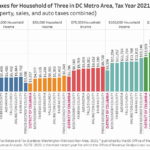American homes are growing while family size declines. Part of the reason is economies of scale.
BY The Hustle December 15, 2024
‘Bigger is better’ is a mantra that American contractors and home builders have taken to heart.
In many neighborhoods across the country, it’s not uncommon to see a perfectly reasonable smaller home from a bygone era being demolished and replaced by another home 2-3x its size.
If you’ve encountered this, you’re not alone.
Over the past century, the median new home build has more than doubled in size, from just over 1k sq. ft. to nearly 2.5k sq. ft.
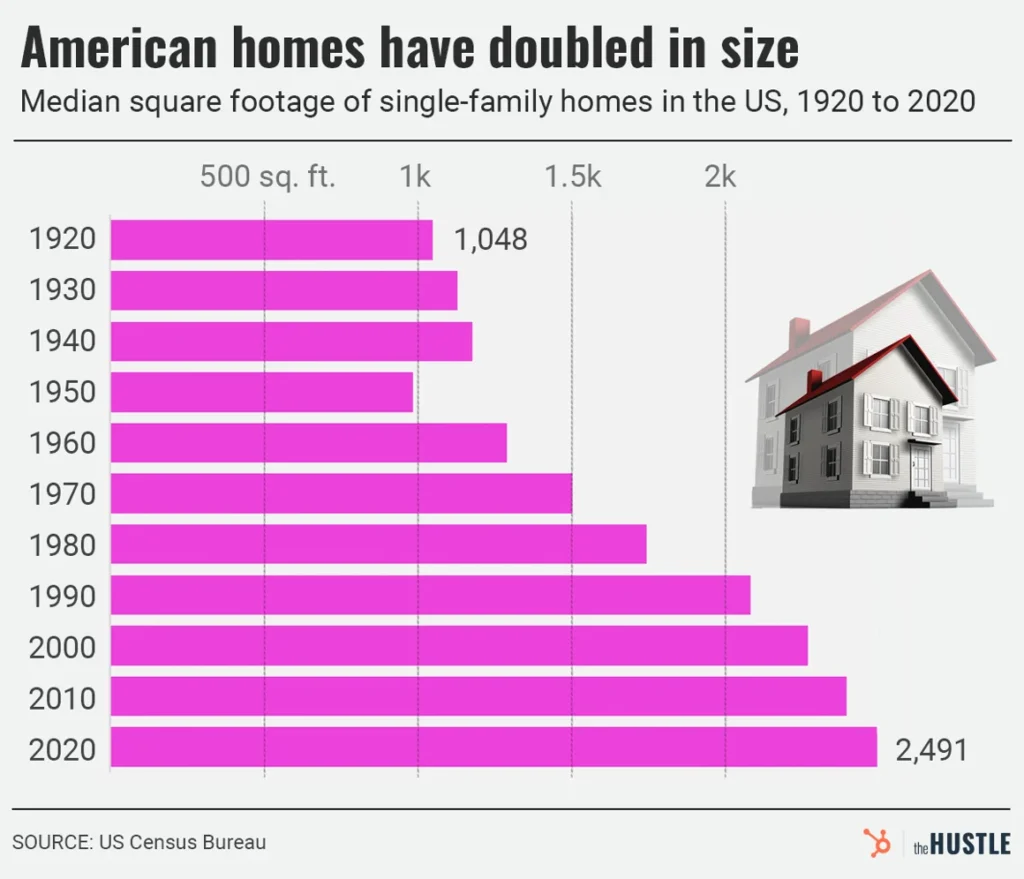
In the 50-year period between 1960 and 2010, homes with 4+ bedrooms and 2.5+ bathrooms went from a rarity to a suburban expectation:
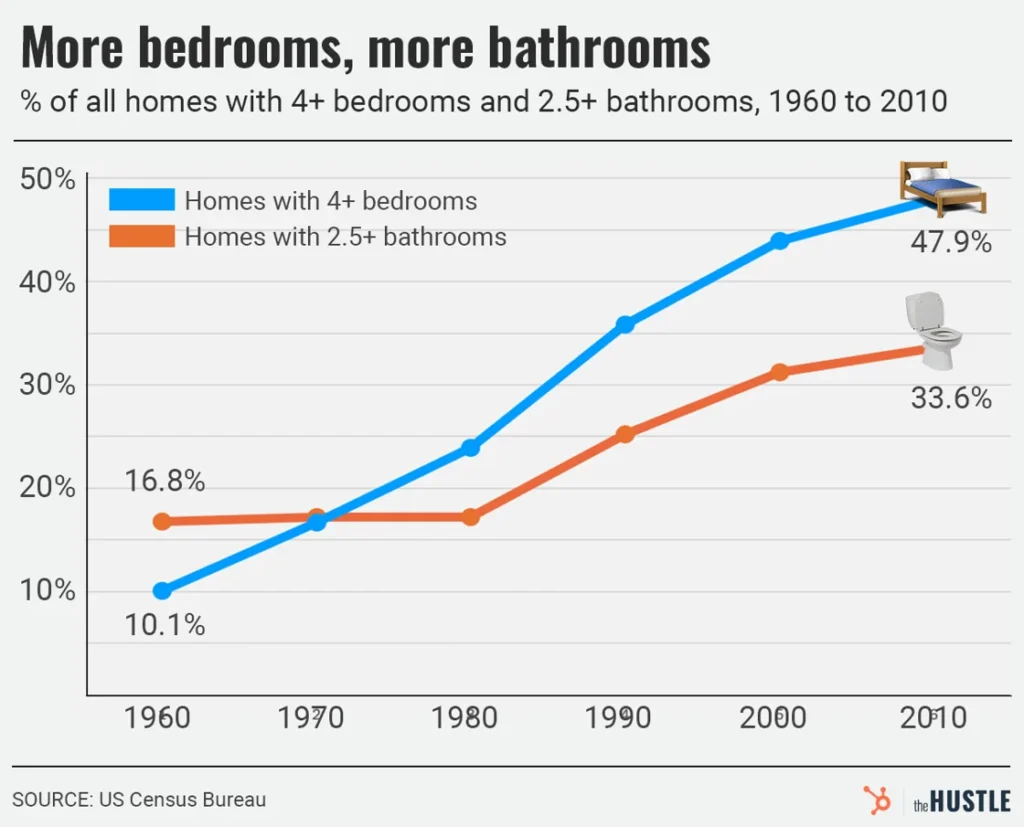
On the surface, this trend seems rather unusual.
As homes have ballooned in size, the median number of inhabitants per single-family home has decreased from 4.3 to 2.5 people. In other words, all that extra space isn’t necessarily being built to make room for more people.
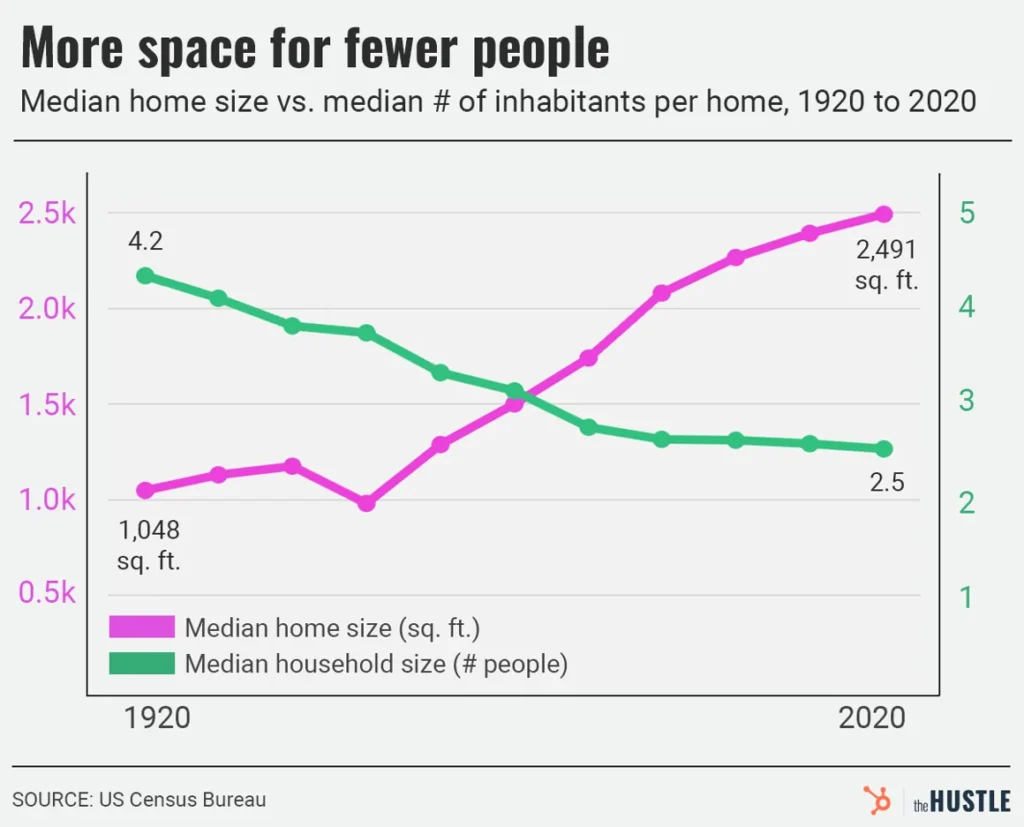
So what’s with all the big houses?
For starters, there are a few practical things that ushered this shift:
From the 1970s onward, Americans began to think of homes as appreciable investments. Bigger houses were seen as better investments.
Banks enacted credit policies that allowed people to borrow more money and buy bigger homes.
Building materials were mass produced and became cheaper over time, allowing for the economical construction of larger homes.
But there’s another answer, and it has to do with economies of scale.
Why builders love big houses
For home builders, a number of construction costs are relatively fixed — they don’t change much, whether they’re building a house that’s 1k sq. ft. or 3k sq. ft. These might include:
* The plot of land
* Land surveys
* Running utilities to the site (electrical, water, sewer, gas)
* Sitework (landscaping, driveway)
* Building permits
* Architect and engineering fees
According to the National Association of Homebuilders, the total construction cost to build a 2.6k-square-foot house is $392k. When you itemize that cost, much of it falls into the fixed costs listed above:
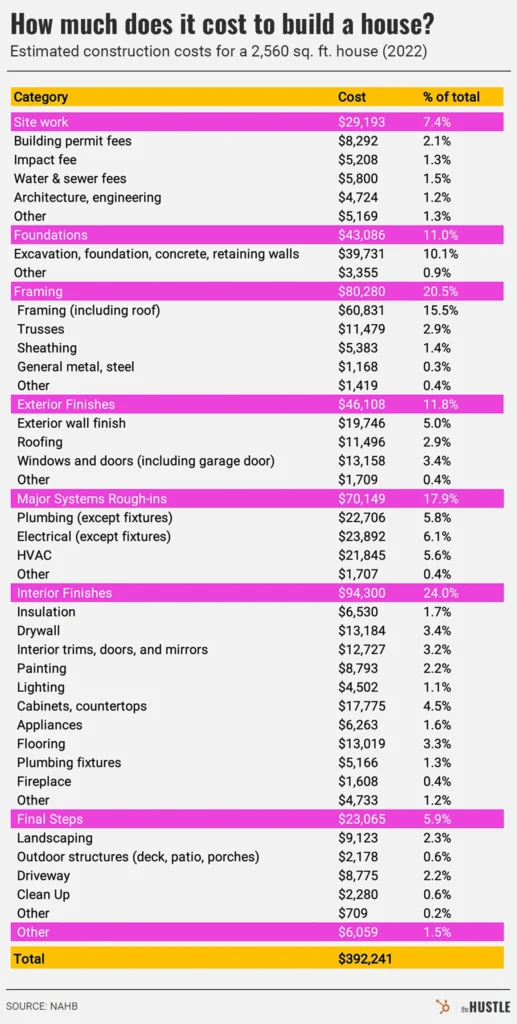
The builder has to pay many of these costs regardless of the home’s size. And in comparison to these fixed costs, adding extra bedrooms and bathrooms is relatively cheap.
Imagine you build a 3 bedroom, 2.5 bathroom house for $120 per square foot. Adding 100 square feet to one of the bedrooms might cost around $6k for the concrete, lumber, drywall, paint, and carpet — or $60 per square foot. By building a bigger home with more bedrooms and bathrooms, they can divide the fixed costs over more square feet.
How might this play out in practice? Here’s one example of the estimated costs to build a 2.6k-square-foot house vs. a 1.4k-square-foot house:

In this example, the builder’s profit margin on the smaller home is about 2% lower than it is for the bigger home — largely because they aren’t scaling up to dilute fixed costs.
For a large national homebuilder, like D.R. Horton, which builds ~90k homes a year, a hypothetical $25k dip in profit per home would amount to more than $2.2B in lost revenue.
Simply put, the math favors building larger homes. But in recent years, the market has dictated a potential change of strategy.
Shifting attitudes
There are some signs that the large home trend is cooling a bit.
The NAHB runs a survey every year asking home buyers what size house they want. In 2024, the average desired size was the lowest it’s been in years, down 10% from a decade ago.
As NAHB’s chief economist, Robert Dietz, told CNBC, buyers are reacting to “a low-inventory, low-housing-affordability environment.”
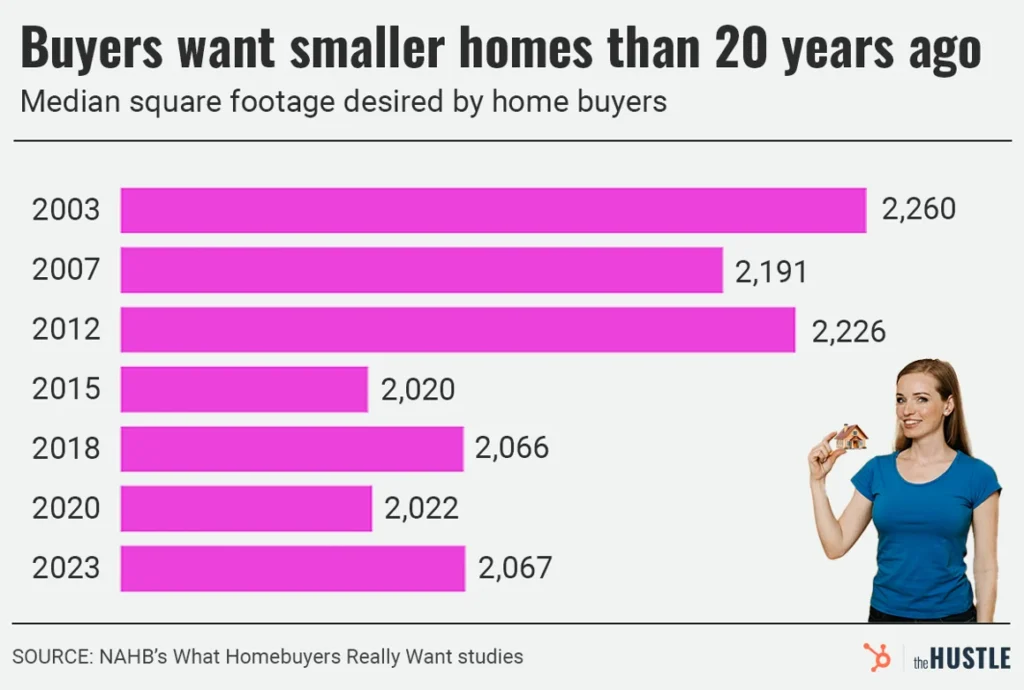
And, though houses have gotten much bigger over the long term, home builders have backed off a bit in recent years. Since peaking at 2.8k sq. ft. in 2015, the average new home size has declined every year since. In 2023, it hit a 15-year low, at 2.3k sq. ft.
Builders seem to be aware of affordability concerns on the buyer side, as rates have steadily increased and home prices have risen. Last year, nearly four in 10 builders reported constructing smaller homes to adjust to preferences.
If you’re in the market for a new 2-bedroom single-family home, it’s possible you may soon be in luck.
Click here to read the full article

